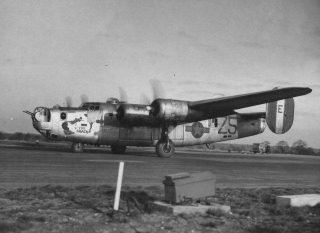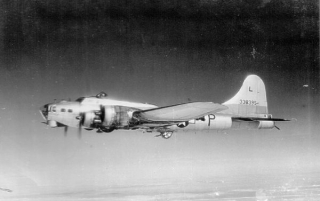The B-24
The first 50 missions flown from Debach were in the B-24 heavy bomber, designed by the Consolidated Aircraft Company of San Diego, California.
The “Liberator” had the distinction of being the most produced allied aircraft in WWII, with over 18,000 being built. At one point they were rolling off the production lines at 1 aircraft per hour, thanks largely to the Willow Run Facility, the Ford Motor Company’s newest and largest production line in Detroit, Michigan, although they were also built in Oklahoma, Texas and of course in San Diego.
The 493rd BG were issued with brand new aircraft, collected from the factories, to be flown over to England. On arrival, the first job was to remove most of the heavy armour plating, designed to protect the crews. This plating reduced the bomb load that could be carried and at the time was considered to be unnecessary – this view was soon changed and some of the plating was later refitted in the critical areas. The aircraft were named and nose art applied, at the personal expense of the crews (more often the Pilots), individual crew members regularly “named” their gun positions after loved ones. Then, before a single mission was flown, some of their lovingly prepared aircraft were taken away from them and replaced by “battle experienced” aircraft previously used by other groups, so the process began again.
The first mission flown in the B-24s was on the 6th June 1944 – “D-Day” assisting the ground troops.
In Late July the ball turrets were removed from most of the B-24s in an effort to increase the speed of the aircraft so the crew, who had trained together, lived together and flew their first missions together, had to lose one of their number. In some cases it was the ball turret gunner who left. In other crews the decision was made amongst all of the gunners on board, often by the roll of the dice, or the cut of the cards. Whilst a lot of these “aircraft less” gunners went off to join other groups, some stayed at Debach, either as “spare gunners”, or went to work in the armories preparing the guns for their colleagues, many returning to flying duties with the arrival of the B-17s.
The last mission the 493rd BG flew in B-24s was on August 28th 1944, to Kiel in Germany.


